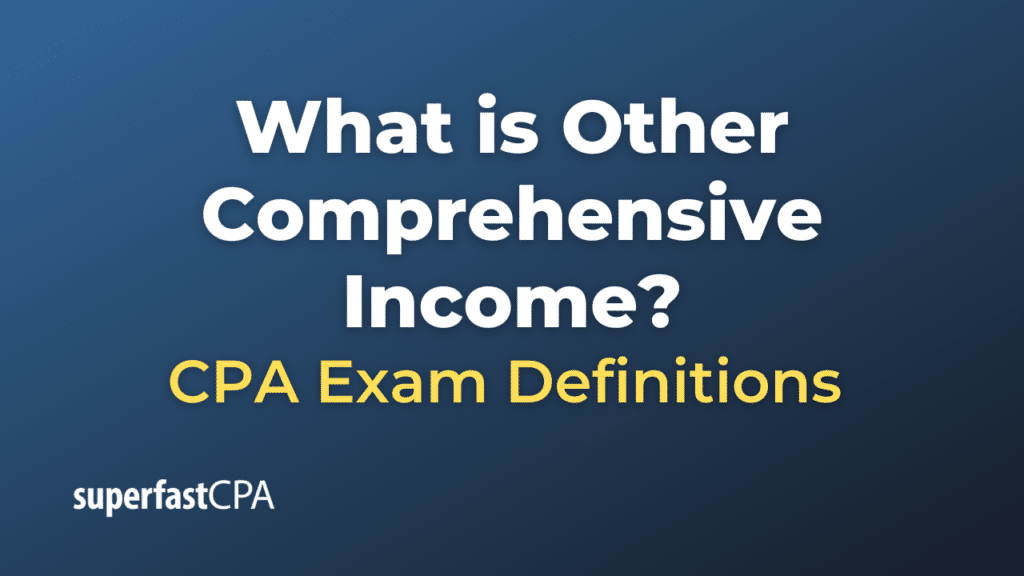Other Comprehensive Income
Other Comprehensive Income (OCI) refers to gains, losses, revenues, and expenses under both International Financial Reporting Standards (IFRS) and Generally Accepted Accounting Principles (GAAP) that are excluded from net income on an income statement. Instead of being recorded as part of net income, these items are included directly in equity, as a part of comprehensive income.
Examples of items that may fall under other comprehensive income include:
- Unrealized gains or losses on available-for-sale securities: Changes in the fair value of securities that a company plans to hold for a while, but not to maturity. The gains or losses are not realized until the company sells the securities.
- Gains or losses from post-employment benefit plans: Changes in the value of pension obligations or other post-employment benefits that aren’t included in net income.
- Unrealized gains or losses on derivatives used for cash flow hedges : This includes changes in fair value of the effective portion of derivatives used in cash flow hedges.
- Foreign currency translation adjustments: These occur when a company translates the financial statements of foreign operations prepared in a currency other than the company’s functional currency into the functional currency.
Other Comprehensive Income is reported in the shareholders’ equity section of the balance sheet and is part of the total comprehensive income of a company. While these items don’t affect net income, they do affect the total equity of a company. It’s important for analysts and investors to consider OCI because it can provide additional insights about risks that a company might face in the future.
Example of Other Comprehensive Income
Let’s consider an example of a company’s statement of comprehensive income to understand how Other Comprehensive Income (OCI) is presented.
Let’s say XYZ Corporation is a U.S.-based multinational company with operations in Europe. They also have an investment portfolio with available-for-sale securities. Here’s how a simplified version of their statement of comprehensive income might look:
| XYZ Corporation |
|---|
| Statement of Comprehensive Income |
| For the Year Ended December 31, 2023 |
| Items | Amounts (in USD) |
|---|---|
| Net Income | $1,000,000 |
| Other Comprehensive Income | |
| Unrealized Gain on Available-for-sale Securities | $50,000 |
| Foreign Currency Translation Adjustments | -$20,000 |
| Total Other Comprehensive Income | $30,000 |
| Total Comprehensive Income | $1,030,000 |
In this example, XYZ Corporation has a net income of $1,000,000. However, there are two items that are part of Other Comprehensive Income:
- Unrealized Gain on Available-for-sale Securities: The company’s investments have increased in value, but these gains are unrealized since the company hasn’t sold the securities yet.
- Foreign Currency Translation Adjustments : The value of the company’s foreign operations has decreased when translated into USD, because of changes in exchange rates.
These two items sum up to a total Other Comprehensive Income of $30,000 ($50,000 – $20,000), and when you add that to the Net Income of $1,000,000, you get a Total Comprehensive Income of $1,030,000. This is the amount that would be added to shareholders’ equity for the year 2023.














